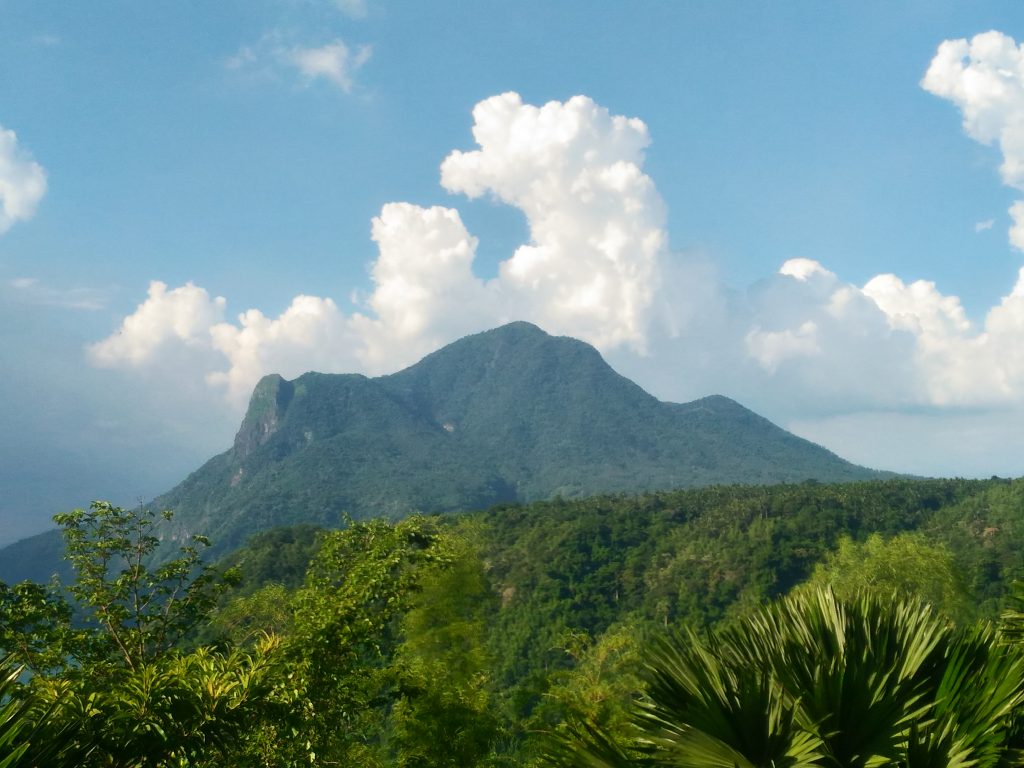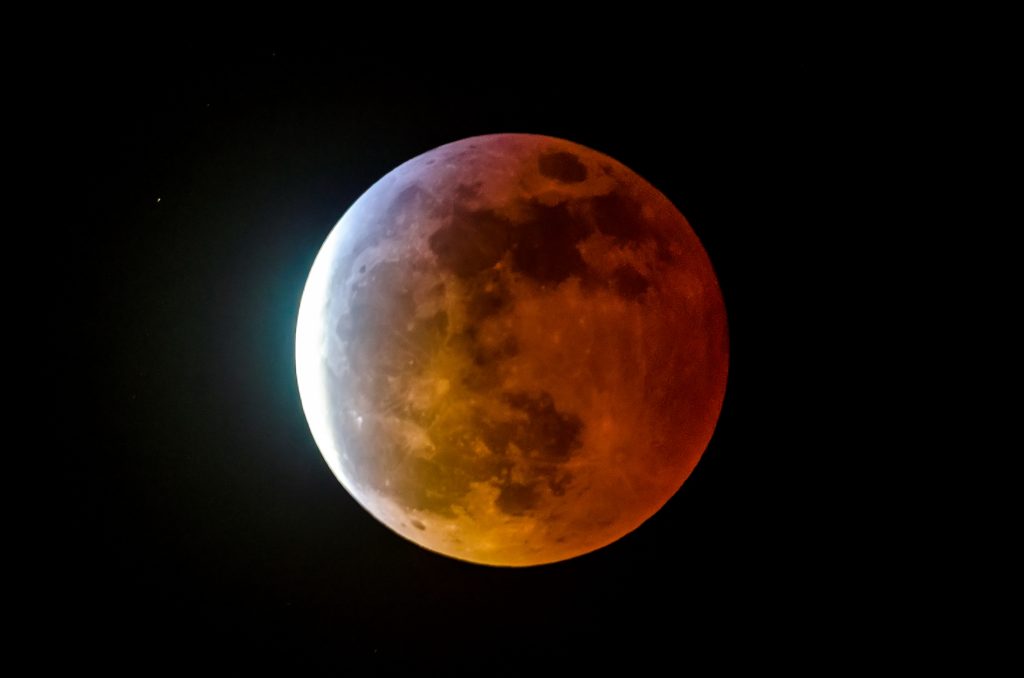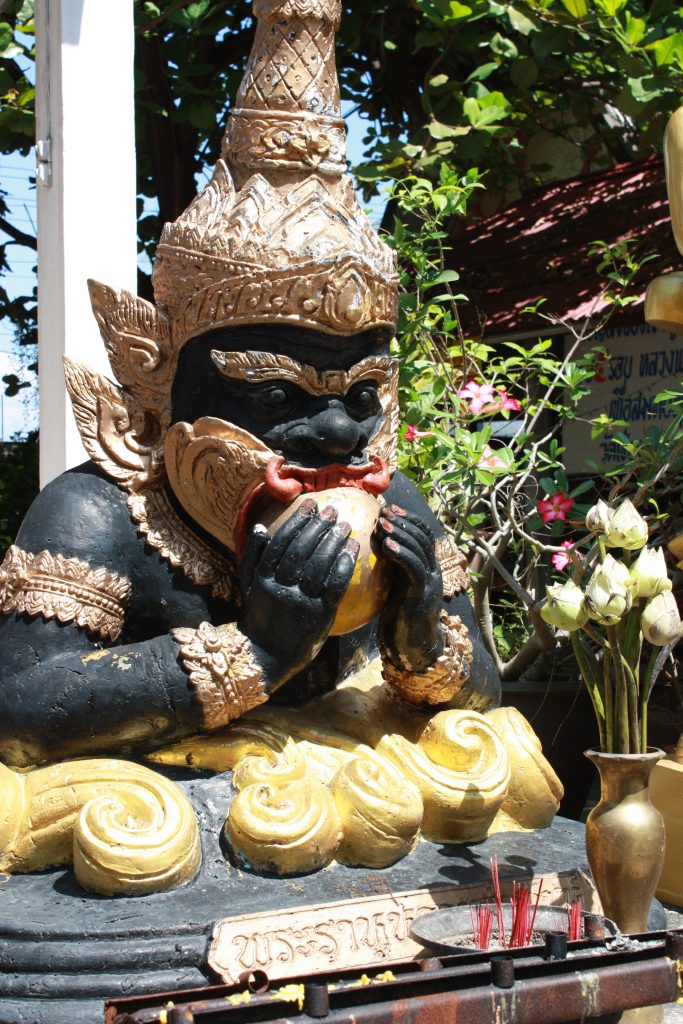In an earlier article, it was mentioned that the Tagalogs believed in a serpent “Laho” that swallowed the moon. In his book, Tagalog Borrowings and Cognates, Jean-Paul G. Potet says that the word “Laho” ultimately comes from the Sanskrit “Rahu” which also means eclipse (1). Interestingly enough, H. Otley Beyer collected two Tagalog legends that strongly support this idea that “Laho” indeed has Indian roots. Both legends come from Batangas, and were recorded in 1915. These can still be accessed in the National Library’s digitized version of Beyer’s collection (2).
Of the two stories, the longer is that by Aurelio P. Arguelles and is titled The Eclipse of the Moon. I write it down here in full, including the typographical/grammatical errors:
“Many years ago, just after the great deluge, there lived in Mt. Macolot several gods who were then the ruler of the world. These gods lived luxuriously. Their tables were full of all kinds of fruits, meat and precious liquors. Among the liquors used by these gods, there was one kind which was extraordinarily delicious and sweet This particular liquor was so rich in taste, that the Gods decided not to reveal the method of extracting the liquor lest the rest of the men in the world would imitate them. But it so happened that at the nearby mountain there lived a giant who once had tasted that liquor and since that time was much interested in discovering the method of extraction.

One night, the giant whose name was Rajo, [i.e., “Raho”] stealthily went to Mt. Macolot and looked over the place where the gods were extracting the delicious liquor. He discovered how the method or process of doing it and with great satisfaction, Rajo, went back creeping to his home. Nobody saw him in this expedition, except perhaps the bright moon. The next day he tried if he could make a liquor of the same kind and he succeeded. At the height of his ecstacy [? the writing is blurred], he called several men, friends of his, and told them the process of extracting such kind of liquor. Soon the use of the delicious wine was universal. On all tables there was wine of this kind.
The gods, upon hearing this sad truth, was bewildered for they could not understand how men came to know the process of making it. They investigated but it seemed in vain. At last the moon betrayed Rajo. The gods turned over to Rajo and were greatly enraged. Rajo, who was also very angry, in turn went over to the moon and at an instance swallowed it up.”
Arguelles then ends with a note saying that “From that time men came to notice of an eclipse of the moon. This eclipse is termed in our native language as ‘nacain ñg laho’ (eaten by ‘laho’). ‘Laho’ may be only a mispronunciation of the name Rajo — the giant.”
The second story is by Jose P. Caedo, titled Kinain ñg Lajo. For brevity’s sake, I will just summarize it. Long ago, there was a ruler named Rajo. He was a strong, wise, though occasionally tyrannical leader. Still, he had a genuine care for his people and because of this he wanted to live forever in order to serve them. He thus decided to spy on the gods to see what it is they fed on that made them immortal. He went to the kingdom of the gods (no longer specified as Mt. Macolot), hid behind a rock, and saw that they fermented a certain kind of nectar which in turn gave them immortality. He then went home, made some of the nectar himself, drank it, and distributed it to his people. Soon everybody started becoming more youthful and invigorated. The gods soon took notice and realized what had happened. They asked the “night watchman,” the moon, who it was who stole the recipe for their nectar. The moon tattled on Rajo, who in turn pursued the former in a rage. Ever since, Rajo continued to pursue the moon. He would sometimes overtake it, but the moon would always be able to escape. When Rajo overtakes the moon, this is the lunar eclipse.
Caedo ends his tale with a note that this story is also common in Java and that it is possible that it was carried over to the Philippines.

Now why do I say that these legends support the Indian origin of “Laho?” This is not only because these legends suggest that the world “Laho” indeed comes from “Rahu,” but also because they are similar to the popular Indian myth behind the eclipse or, precisely, “Rahu.” In Potet’s discussion above regarding the connection between “Laho” and “Rahu,” he narrates a brief version of this myth. He says:
“In Indian Mythology, gods and demons join forces to churn the Ocean of Milk and obtain the nectar of immortality (Amrita). The gods then exclude the demons from their share, but the demon Sainhikeya…managed to join the queue, and was given nectar. When the Sun and Moon saw this, they alerted Vishnu, who severed Sainhikeya’s head from his body. The head is named Rahu and the body Ketu. Both are immortal because of the nectar, and they have been roaming the sky ever since. Seeking revenge, Rahu swallows the Sun or the Moon whenever possible, but always fails because the Sun and Moon slip out through his neck (3).”

From here we can obviously see the likeness of the Indian myth to its Tagalog counterparts. Of the latter however, Caedo’s version is the more similar because it includes the notion of a nectar providing immortality. The Indian myth is also distinct in that it is an explanation for both the solar and lunar eclipses, while the Tagalog counterparts only explain the lunar one. At any rate, the similarity of stories open up a number of questions regarding transmission. Could the myth have traveled directly from India to the Philippines? And if it did, when did it travel? Before or during colonial times? The latter is possible since Indians settled in Tagalog lands en masse during the British invasion of the Philippines. Or, perhaps as Caedo implies, the myth reached the Tagalogs through other Austronesian peoples like the Malay or Javanese? Perhaps we might never know. However, what all these do remind us of is the ever-present connection Filipinos have with their neighboring Asian civilizations.
FOOTNOTES:
(1) John-Paul G. Potet, Tagalog Borrowings and Cognates. (Raleigh, NC: Lulu Press, Inc., 2016), 110-111.
(2) Aurelio P. Arguelles. Batangas Folktales. From the National Library of the Philippines, H. Otley Beyer Ethnographic Collection. http://nlpdl.nlp.gov.ph/OB01/NLPOBMN0037001055/home.htm (accessed April 20, 2020).
Jose P. Caedo. “Kinain ñg Lajo.” From the National Library of the Philippines, H. Otley Beyer Ethnographic Collection. http://nlpdl.nlp.gov.ph/OB01/NLPOBMN0037001056/home.htm (accessed April 20, 2020).
(3) John-Paul G. Potet, Tagalog Borrowings and Cognates. (Raleigh, NC: Lulu Press, Inc., 2016), 111.
ALSO READ: BAKUNAWA: The Moon Eating Dragon of Philippine Mythology
I finished an undergraduate and master’s degree in Philosophy. But one of my continuing interests is Philippine folklore and mythology.


